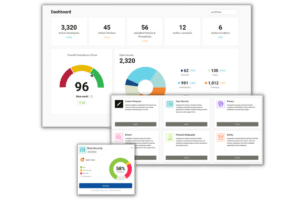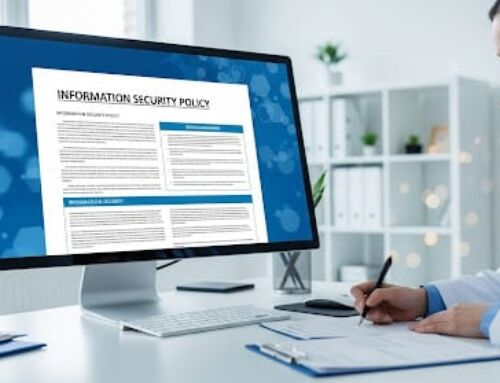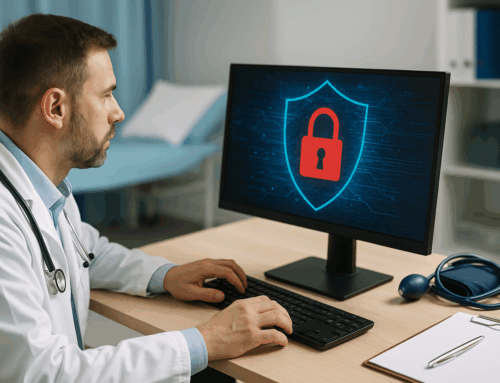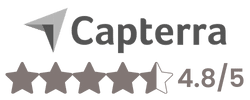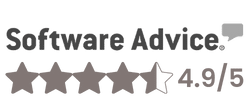
More than ever before, healthcare organizations are faced with increasing threats to cybersecurity and information security. From ransomware attacks to data breaches that expose sensitive information, the sector has become vulnerable, and threat actors will not hesitate to use healthcare centers as shopping malls for your patient’s data. As a result, compliance frameworks such as GDPR mandate data protection; however, what you need is not an instruction to protect patient data or systems but a comprehensive guideline on how this must be done.
This is where ISO 27001:2022 comes in. The ISO/IEC 27001:2022 is the international standard that governs Information Security Management Systems (ISMS). Its structured risk-based approach, often referred to as the ISO 27001 framework, bridges the gap between knowing what to do and how to do it through its structured approach to risk analysis.
For compliance professionals, understanding ISO 27001’s risk-based methodology is critical because:
- It aligns with regulatory requirements.
- It provides a systematic way to identify, assess, and mitigate security risks.
- It shifts compliance from a “checklist” exercise to a proactive security strategy.
This article breaks down:
- What ISO 27001 is (and why healthcare compliance teams should care).
- The role of risk analysis in ISO 27001.
- How ISO 27001 complements other healthcare regulations.
- Practical steps to implement ISO 27001’s risk framework.
How the ISO 27001 Risk Management Framework Works
ISO 27001 is a globally recognized standard for building, implementing, and maintaining an Information Security Management System (ISMS). Unlike other compliance regulations in the health sector, it employs a risk-based approach to securing all sensitive data in line with the CIA triad of:
Confidentiality
This means that information protected under this ISMS standard must remain confidential at all times; that is, it must not be viewed or accessed by anyone without the right to access it and beyond the degree to which such a person has a right of access.
Integrity
This means that the information protected under this standard must be kept in its original form without any undue alterations to it.
Availability
This means that the information protected under this standard must be readily available to authorized individuals whenever they require such information.
Information that could be covered under the ISO 27001 standard in the healthcare sector includes:
- Electronic health records (EHRs)
- Financial data (billing, insurance)
- Internal communications (emails, employee records)
Why ISO 27001 Risk Management Matters for Healthcare Professionals
Risk-Based vs. Prescriptive
By employing a risk-based approach, the ISO 27001 risk management framework guides teams from assessment to treatment. It provides a clear scenario of what could go wrong in the absence of certain controls in specific real-life situations and then provides options on how to approach these risks.
Unlike other prescriptive frameworks, it explains why certain controls are needed and how to implement them effectively.
Global Benchmark
Adopting ISO 27001 is an indicator that your organization is concerned about patients’ privacy and information, up to the point of adopting global best practices that can stand regulatory tests across several jurisdictions.
Audit Readiness
An ISO 27001-certified ISMS simplifies regulatory audits by providing documented evidence of your organization’s policies and procedures regarding information security as well as the controls put in place to forestall or mitigate risks.
The Core of ISO 27001: Risk Analysis
Of all the clauses contained in the ISO 27001 standard, risk analysis, which falls under Clause 6.1.2 as risk assessment, is its most critical component. This clause provides a comprehensive breakdown of the requirements for an effective risk assessment and a repeatable method for carrying out the analysis.
Key Steps in ISO 27001 Risk Analysis
1. Asset Classification & Threat Identification
This involves answering the question, “What data do we have?” (EHRs, payment systems, research data), and what could go wrong. (Breaches, ransomware, insider threats)
2. Risk Assessment
ISO 27001 risk analysis begins with risk assessment — the empirical method by which we determine the likelihood of an identified threat occurring. It is where the ISMS implementer answers the question: How probable is the threat?
Under risk assessment, we also must determine the impact of a perceived threat occurring under the assumption that it could occur.
We ask and answer: How severe would the damage be? (For example, a breach of 10,000 patient records could lead to phishing emails being sent to hospital patients, which would negatively impact the reputation of the organization and the finances of the patients.)
3. Risk Evaluation and Classification
Here, we use a risk matrix (e.g., high/medium/low) to help us focus resources on the biggest threats.
4. Risk treatment options
Under this step, we implement controls from ISO 27001’s Annex A, which is a list of controls that can be adopted to mitigate risks. Depending on the organization’s resources and risk appetite, we may choose to accept, avoid, or transfer risk by various means, such as cyber insurance.
5. Monitor & Review
Risks evolve, and ISO 27001 helps healthcare experts monitor and review them periodically by effectively documenting all risks, including those that have been accepted, avoided, or mitigated.
Example: Applying ISO 27001 Risk Analysis in a Hospital

Is ISO 27001 Necessary for Healthcare Organizations Already Meeting Compliance Standards?
Yes! Healthcare compliance teams worry about “overlap” or “conflict” between ISO 27001 and other requirements such as the Health Insurance Portability and Accountability Act, but in truth, they serve to reinforce each other.
There are many similarities between ISO 27001’s requirements and those of other regulatory requirements, such as HIPAA.

Essentially, ISO 27001 provides a more detailed implementation guideline and must be considered by healthcare professionals interested in maintaining impeccable information security management system standards.
A good example of this is the HIPAA rule, which simply advises professionals to “implement safeguards.” ISO 27001 explains this further in Annex 9.4.2, where it prescribes the use of multi-factor authentication, and A.12.4.1 advises the logging of all access attempts.
How To Implement ISO 27001’s Risk Management Framework in Healthcare
For healthcare compliance teams new to ISO 27001, here’s how to start:
Step 1: Get Leadership Buy-In
The top management of an organization must be sufficiently interested in implementing and ensuring compliance with the standard before it can be effectively implemented.
- Frame ISO 27001 as a risk reduction tool, not just a compliance exercise: it’s not just about following a few rules to meet sector requirements; it’s about reducing the exposure of the business to several risks.
- Highlight cost savings (e.g., avoiding OCR fines for HIPAA violations).
Step 2: Conduct a Gap Analysis
- Compare current policies against ISO 27001’s Annex A and determine where improvements must be made.
Step 3: Ensure Compliance with Document Control Measures
- All departments and staff of the organization must inculcate good document control practices, such as document classification (this is where we label documents according to their order of accessibility, i.e., confidential, internal, or public).
Step 4: Prioritize High-Impact Risks
- Focus first on critical assets (EHRs, billing systems). Having carried out a comprehensive risk assessment, the most critical assets in a healthcare professional’s care will become apparent.
For healthcare compliance professionals, ISO 27001 isn’t just another standard—it’s a strategic framework to proactively manage risks. By leveraging the ISO 27001 risk analysis process with existing HIPAA programs, organizations can:
- Move beyond checkbox compliance to true security resilience.
- Reduce audit friction with documented, internationally recognized controls.
- Prepare for emerging threats (e.g., AI-driven attacks, cloud vulnerabilities).
We recommend:
- Constant information security awareness sessions with particular reference to ISO 27001 fundamentals.
- Periodic risk assessment on a defined basis (annually, quarterly, monthly)
- Engage a consultant for gap analysis if resources allow.
To advance towards a future of sustainable healthcare compliance, we must be increasingly risk-aware, not just rule-aware, and ISO 27001 provides the roadmap to get there.
